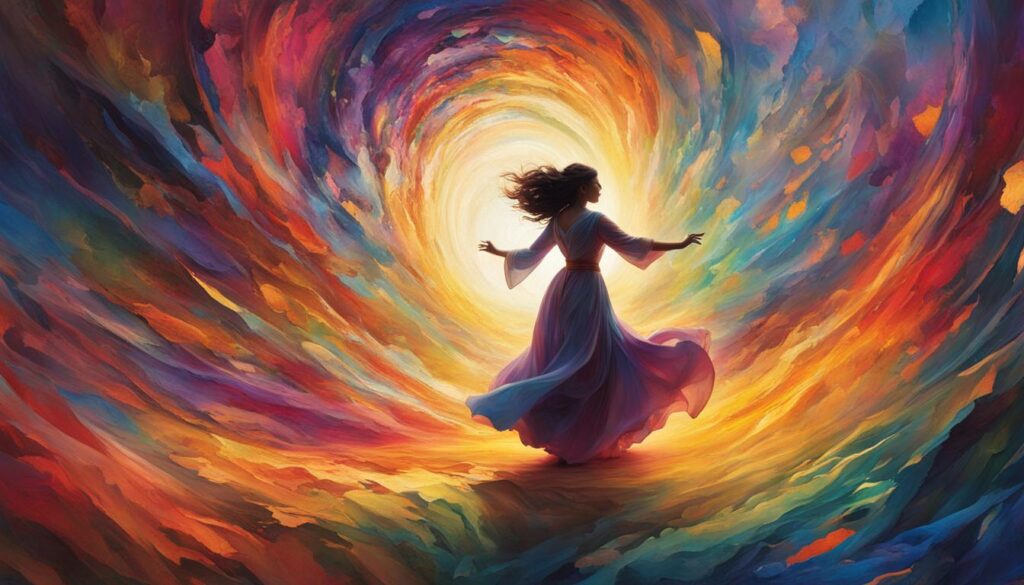We may earn money or products from the companies mentioned in this post.
Music is a universal language that has evolved over time, reflecting the culture and artistic expression of various societies throughout history. From ancient civilizations to modern times, music has been an integral part of cultural evolution and provides a unique lens to understand the past.
This article explores the evolution of music through different ages and genres, highlighting the key musical periods and their distinguishing characteristics. We delve into the early periods of music, starting from ancient civilizations to the medieval times, and explore the emergence of new musical forms and composers who shaped the Renaissance and Baroque eras. We also showcase the works of renowned composers like Mozart, Beethoven, and Haydn during the Classical period and explore the Romantic era’s emphasis on emotional expression in music. Finally, we discuss the modern and contemporary periods of music and their diverse range of styles and genres that have emerged.
Key Takeaways
- Music has evolved over time and reflects the culture and artistic expression of various societies throughout history.
- Exploring the musical periods and genres provides a unique lens to understand the past.
- The early periods of music, starting from ancient civilizations to the medieval times, showcases the emergence of new musical forms and composers.
- The Renaissance and Baroque periods are characterized by artistic and musical advancements.
- The Classical period showcases the works of renowned composers like Mozart, Beethoven, and Haydn, and highlights the shift in musical style and structure during this time.
Understanding Music History: From Ancient to Medieval Times
Music has been an integral part of human civilizations throughout history. In this section, we will explore the early periods of music, starting from ancient times to the medieval era.
Ancient Music:
In ancient times, music was used in various aspects of life, from religious rituals to entertainment. The ancient Egyptians, for example, believed that music had healing properties and incorporated it into medical treatments.
Music in ancient Greece was highly valued and considered an essential aspect of education. Music was played during sporting events, and the Greeks believed that it had the power to influence a person’s mood and behavior.
Similarly, in ancient China, music was considered a tool for social and political communication. It was believed that music could convey emotions that words could not express and could be used to influence the behavior of both individuals and groups.
Medieval Music:
The medieval period spans from the 5th century to the 15th century CE and is characterized by the dominance of the Christian church. During this time, music was primarily used in religious settings, with Gregorian chant being the dominant form of music.
However, during the later part of the medieval period, secular music began to emerge. Troubadours and minstrels traveling from town to town performed secular songs, which were often about love and chivalry.
| Music Period | Timeframe | Main Characteristics |
|---|---|---|
| Ancient Music | Before 5th century CE | Used in religious rituals and other aspects of life. Had cultural significance and healing properties. |
| Medieval Music | 5th – 15th century CE | Primarily used in religious settings, with Gregorian chant being the dominant form of music. Beginning of secular music. |
Understanding the history of music is crucial in appreciating its evolution and significance today. In the next section, we will explore the Renaissance and Baroque periods, characterized by artistic and musical advancements.
The Renaissance and Baroque Periods: A Flourishing of Art and Music
The Renaissance period, spanning from the 14th to the 17th century, marked a cultural and intellectual rebirth across Europe. This era witnessed a resurgence of art, architecture, literature, and music, with composers exploring new forms and styles. The Baroque period, which followed in the 17th and early 18th centuries, saw music become more ornate and intricate, with a focus on dramatic expression.
The Renaissance saw the emergence of new forms of music, including the madrigal, a secular vocal composition with intricate harmonies. Prominent composers of the era include Giovanni Pierluigi da Palestrina, who is best known for his sacred choral music, and William Byrd, who was instrumental in advancing the madrigal. One of the most notable developments of the Baroque period was the development of opera, with composers such as Claudio Monteverdi and George Frideric Handel producing some of the most renowned works in the genre.
Table:
| Composers | Style/Genre |
|---|---|
| Giovanni Pierluigi da Palestrina | Sacred choral music |
| William Byrd | Madrigal |
| Claudio Monteverdi | Opera |
| George Frideric Handel | Opera |
The Baroque period also saw the rise of instrumental music, with composers like Antonio Vivaldi and Johann Sebastian Bach producing some of the most celebrated works in the genre. Compositions became more intricate and complex, with composers experimenting with new forms such as the suite and concerto.
The Renaissance and Baroque periods were characterized by a flourishing of art and music, with new forms and styles emerging. Composers of the era pushed the boundaries of what was possible and set the stage for the developments that would follow.
Classical Music: A Revolution in Sound
The Classical period in music history spanned from the mid-18th century to the early 19th century. This era saw a significant shift from the Baroque period, with a renewed focus on simplicity, clarity, and balance in music composition. The Classical period gave rise to some of the most renowned composers in history, including Wolfgang Amadeus Mozart, Ludwig van Beethoven, and Franz Joseph Haydn.
One of the distinguishing features of Classical music is its emphasis on form and structure. Composers of this era often used sonata form, consisting of exposition, development, and recapitulation. This approach allowed for the development of themes and motifs in a coherent and organized manner.
The Composers of the Classical Period
Wolfgang Amadeus Mozart was a prolific composer whose works have endured throughout history. He composed over 600 works, including symphonies, concertos, operas, and chamber music. His works are known for their intricate melodies, harmonies, and complex structures.
Ludwig van Beethoven was a trailblazer in the Classical period, and his music marked a departure from the style of his predecessors. He is known for his unique use of tonality, dissonance, and harmony. His Ninth Symphony, with the famous Ode to Joy, is still widely celebrated today.
Franz Joseph Haydn was a prominent figure in the Classical era, known for his contributions to the development of the symphony and string quartet. He composed over 100 symphonies and was considered one of the most influential composers of his time.
The Legacy of Classical Music
The Classical period in music history marked a revolution in musical style and composition. The era’s influence can be felt in music to this day, as it set the foundation for many of the styles and genres that followed. Classical music has endured as a timeless art form, and its impact on music history cannot be overstated.
Romanticism: Emotion and Expression in Music
The Romantic era in music history spanned from the late 18th century to the early 20th century, following the Classical period. It was a time of profound artistic, literary, and intellectual movements that shaped the musical landscape significantly. The Romantic era was characterized by an emphasis on emotional expression, individuality, and creativity.
The Rise of Romanticism
The Romantic era saw a significant shift from the Classical era, with composers no longer bound by the strict musical structures and forms of the past. Instead, they turned to personal expression and experimentation, resulting in a diverse range of music styles and genres.
During this period, composers emphasized the use of harmony, melody, and orchestration to evoke emotions and express personal feelings. They sought to transport listeners to imaginary worlds and evoke powerful emotions, such as love, longing, and despair.
Notable Romantic Composers
Some of the most influential composers of the Romantic era include Frederic Chopin, Franz Liszt, Richard Wagner, and Pyotr Ilyich Tchaikovsky.
| Composer | Notable Works |
|---|---|
| Frederic Chopin | Nocturnes, Fantaisie-Impromptu, and The Revolutionary Etude |
| Franz Liszt | Hungarian Rhapsodies, Sonata in B minor, and Les preludes |
| Richard Wagner | The Ring Cycle, Tristan and Isolde, and The Flying Dutchman |
| Pyotr Ilyich Tchaikovsky | Swan Lake, The Nutcracker, and 1812 Overture |
The Legacy of Romanticism
The Romantic era left an indelible mark on music history, inspiring future generations of composers and musicians. Its emphasis on individual expression and emotion influenced various musical genres, including pop, rock, and jazz.
Several of the most beloved pieces of classical music were composed during the Romantic era and are still popular today. For example, Tchaikovsky’s Nutcracker remains a Christmas classic, and Wagner’s Ride of the Valkyries is a well-known musical motif.
The Romantic era also paved the way for further experimentation and innovation in music, leading to the birth of new genres and sub-genres. Even as music continues to evolve, the Romantic era remains a significant period in musical history and an inspiration to musicians around the world.
From Modernism to Contemporary: Evolving with the Times
The evolution of music has continued into the modern and contemporary periods, with new genres and styles constantly emerging. The 20th century saw a sea change in the way music was produced, with technological advancements like electronic instruments and recording equipment.
Modernism
The modernist movement in music was marked by a departure from traditional harmonies and structures. Composers like Stravinsky and Schoenberg experimented with atonality and dissonance, creating music that was challenging and thought-provoking. The rise of jazz and blues also marked a significant shift in popular music during this period.
Post-War Period
The period after World War II saw a dramatic shift in the cultural landscape, with new movements and genres emerging. The birth of rock and roll marked a seismic shift in popular music, with artists like Elvis Presley and Chuck Berry paving the way for future generations. The advent of electronic music also marked a significant development, with artists like Kraftwerk and Brian Eno creating music that was entirely produced using electronic instruments.
Contemporary Music
The landscape of contemporary music is incredibly diverse, with countless genres and sub-genres catering to a diverse range of tastes. Hip-hop and rap have emerged as dominant cultural forces, with artists like Kendrick Lamar and Drake reaching global audiences. Electronic dance music (EDM) has also seen a surge in popularity, with festivals like Coachella and Tomorrowland attracting tens of thousands of fans every year.
| Genre | Notable Artists |
|---|---|
| Hip-hop/Rap | Kendrick Lamar, Drake, Jay-Z |
| Electronic Dance Music | Calvin Harris, David Guetta, The Chainsmokers |
| Pop | Taylor Swift, Ariana Grande, Justin Bieber |
| Rock | Coldplay, Foo Fighters, Imagine Dragons |
| Country | Keith Urban, Carrie Underwood, Luke Bryan |
The evolution of music has been a fascinating journey, reflecting the changing social and cultural landscape of our world. From ancient civilizations to the present day, music has been a constant force that has shaped our lives and our communities. By exploring different genres and periods, we can gain a deeper appreciation for this timeless art form and the profound effect it has had on our world.
Conclusion
As we have journeyed through the ages, we have seen the evolution of music and the impact it has had on culture and society. From ancient civilizations to modern times, music has been an integral part of human expression and communication. It has evolved and adapted, reflecting the changes in society, technology, and artistic expression.
The study of music history allows us to understand the development of music genres, the creative forces behind them, and their influence on culture. We have seen how different genres emerged during different periods and how they have evolved over time. Each era or genre has a unique story to tell, and exploring them provides us with a richer understanding of music as a whole.
The evolution of music is ongoing, and new genres and styles are emerging all the time. The advent of technology has allowed for new forms of music production and distribution, and artists are continually pushing the boundaries of creative expression. The future of music is exciting, and we can only imagine what new genres and sounds will emerge in the coming years.
Whether we listen to classical music or contemporary pop, music has the power to move us, inspire us, and connect us to one another. It is a timeless art form that has endured throughout the ages and will continue to do so. By understanding the evolution of music and exploring different genres, we gain a deeper appreciation for this art form and its impact on human culture.
FAQ
What is the purpose of this series on music history?
The purpose of this series is to provide readers with a comprehensive understanding of the evolution of music through different ages and genres. We aim to explore the significance of music in cultural development and showcase the contributions of notable composers and musical styles.
How is music history divided into different periods?
Music history is typically divided into various periods based on significant cultural, social, and artistic changes. These periods include ancient and medieval times, the Renaissance and Baroque periods, the Classical period, the Romantic era, and modern and contemporary periods.
What can I expect to learn about the Classical period in music history?
In the section on the Classical period, you can expect to learn about renowned composers such as Mozart, Beethoven, and Haydn, and their influential works. We will also discuss the shift in musical style and structure during this time and its impact on the development of classical music.
How does the Romantic era differ from other periods in music history?
The Romantic era in music history is known for its emphasis on emotional expression and exploration of personal and profound themes. This period saw the rise of composers like Chopin and Wagner, who brought a new level of passion and intensity to their works.
How has modernism and contemporary music evolved with the times?
Modernism and contemporary music have evolved with the times through the incorporation of various styles and genres. This section will explore the diverse range of musical expressions that have emerged, influenced by technological advancements and cultural shifts. It will showcase how music continues to evolve and adapt to the changing world.
What is the significance of exploring different music genres?
Exploring different music genres allows us to gain a comprehensive understanding of the rich history and cultural diversity of music. It helps us appreciate the unique characteristics and contributions of each genre and enables us to broaden our musical horizons.
Affiliate Disclosure: This post may contain affiliate links. If you purchase through our link, we may receive a small commission, but at no additional cost to you. For more information, please see our Disclosure statement.



